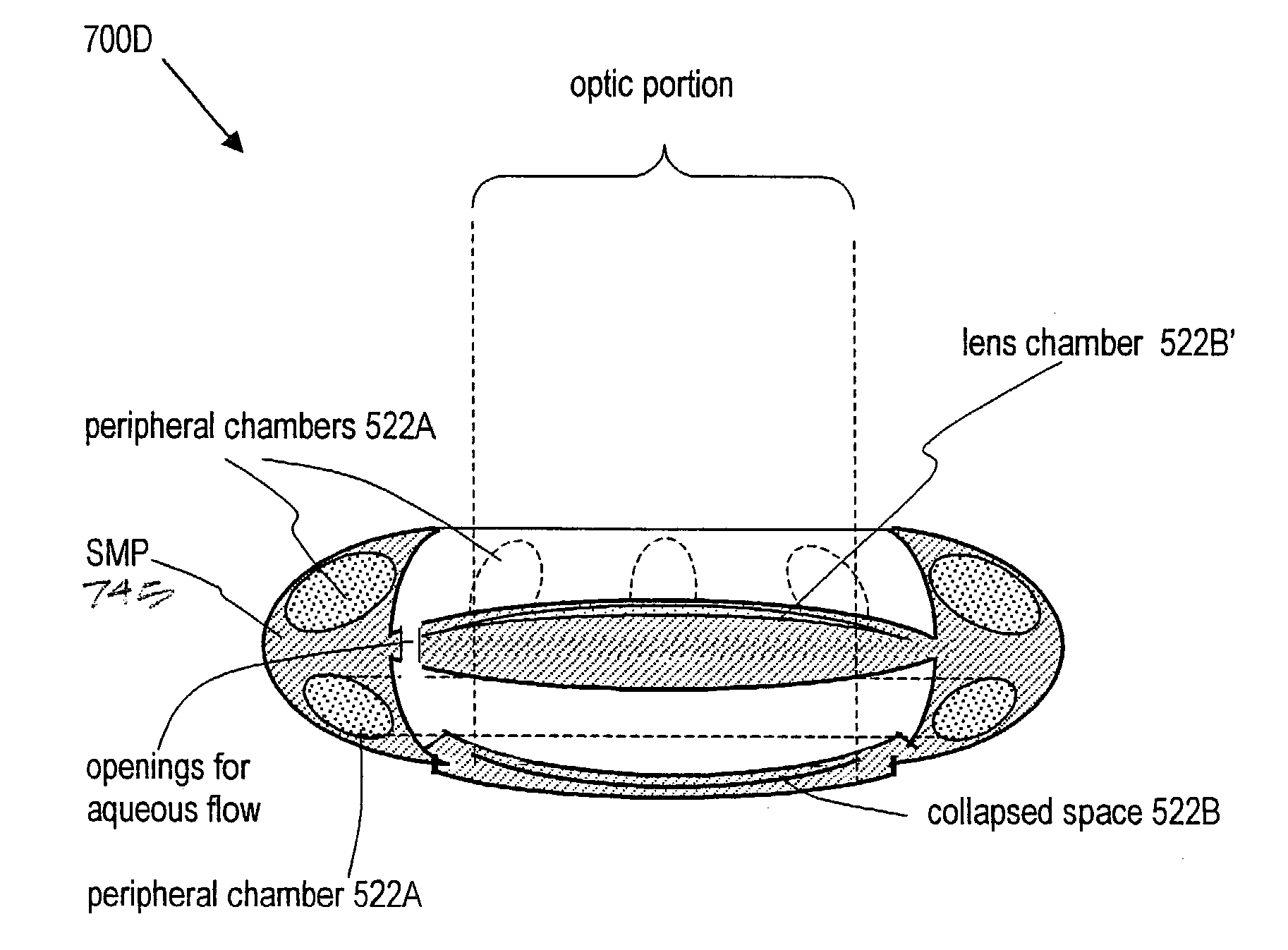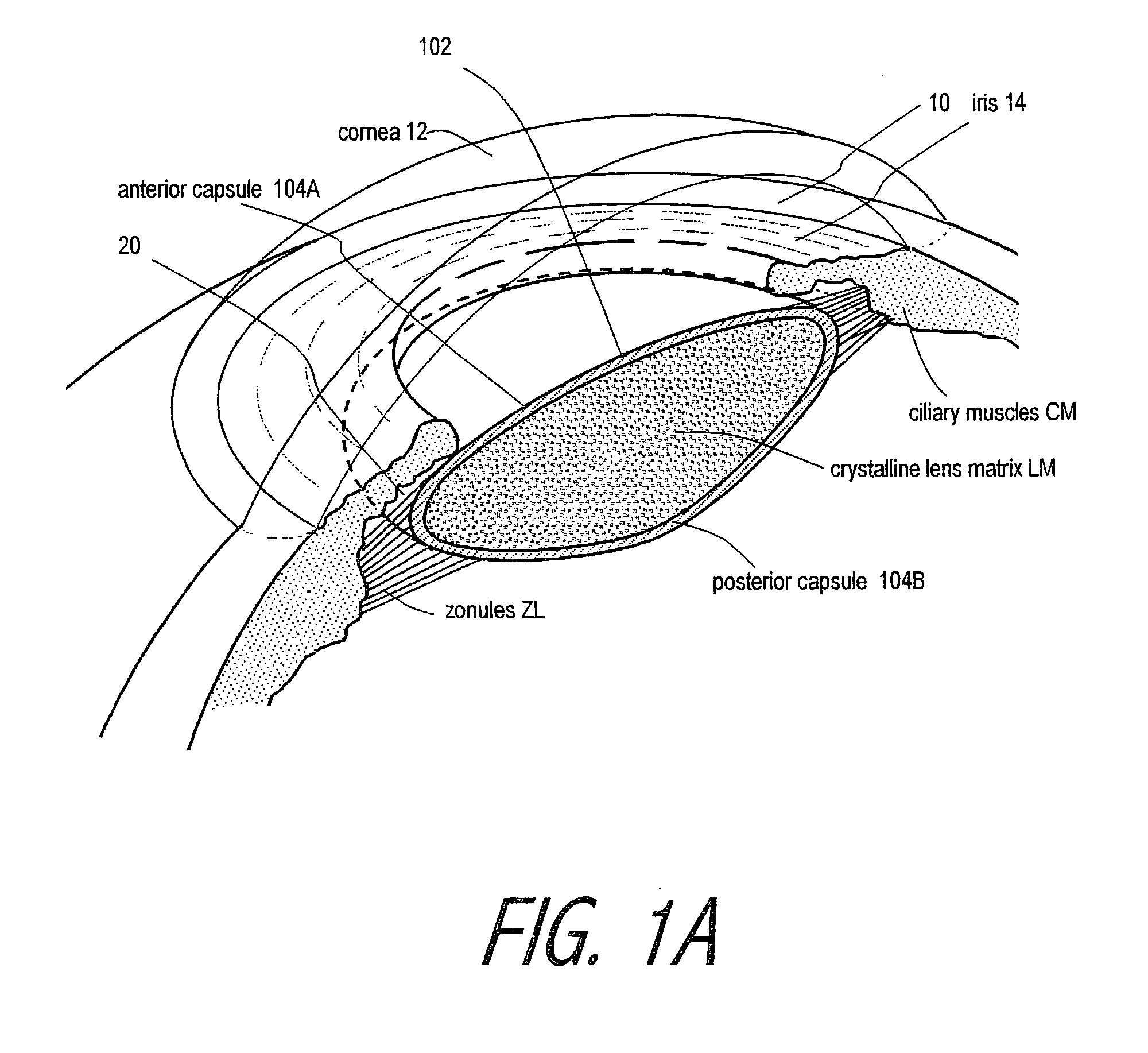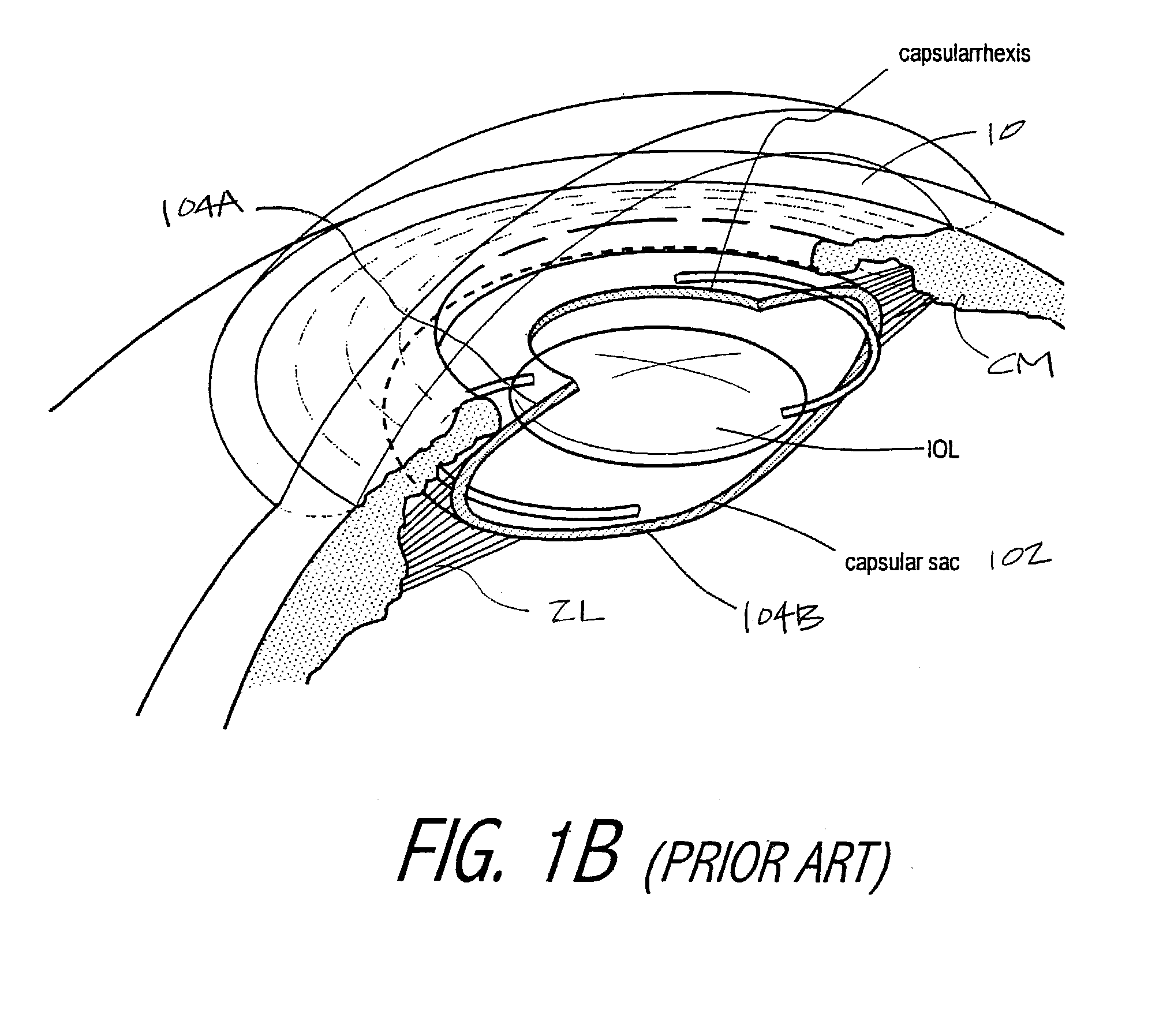Intraocular implant devices
a technology of implanted ocular parts and implants, which is applied in the field of intraocular lens shaping devices, can solve the problems of biocompatibility of nickel titanium alloys and other biocompatible materials, and achieve the effect of simplifying lens exchang
- Summary
- Abstract
- Description
- Claims
- Application Information
AI Technical Summary
Benefits of technology
Method used
Image
Examples
Embodiment Construction
I. Principles of Superelasticity and Shape Memory in Classes of Ophthalmic Implant Materials
[0065]The capsular shaping element (CSE) of the invention is adapted for providing a biomimetic lens capsule complex that will enable an accommodative lens system, which can have several variants. The term biomimetic lens capsule is derived from the word biomimesis, which defines the development of structures that mimic life, or that imitate biological systems. In this case, the objective is to develop an implant that mimics the inherent elasticity of a young lens capsule for cooperating with the ciliary muscle to alter the shape or translation of an implanted optic element.
[0066]The biomimetic lens capsules corresponding to the invention are enabled by the phenomena of shape memory and superelasticity that are unique to certain newly developed so-called intelligent materials. In particular, one embodiment of CSE comprises a thin-film expanse of a nickel titanium alloy that is fabricated in a...
PUM
 Login to View More
Login to View More Abstract
Description
Claims
Application Information
 Login to View More
Login to View More - R&D
- Intellectual Property
- Life Sciences
- Materials
- Tech Scout
- Unparalleled Data Quality
- Higher Quality Content
- 60% Fewer Hallucinations
Browse by: Latest US Patents, China's latest patents, Technical Efficacy Thesaurus, Application Domain, Technology Topic, Popular Technical Reports.
© 2025 PatSnap. All rights reserved.Legal|Privacy policy|Modern Slavery Act Transparency Statement|Sitemap|About US| Contact US: help@patsnap.com



